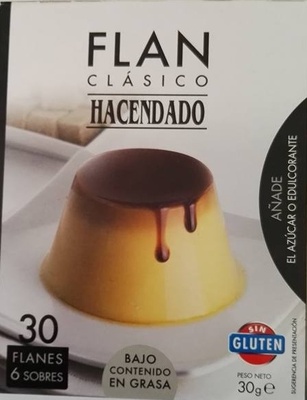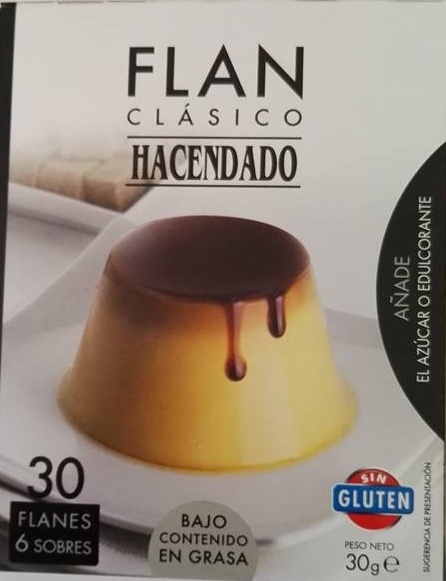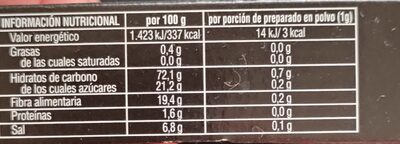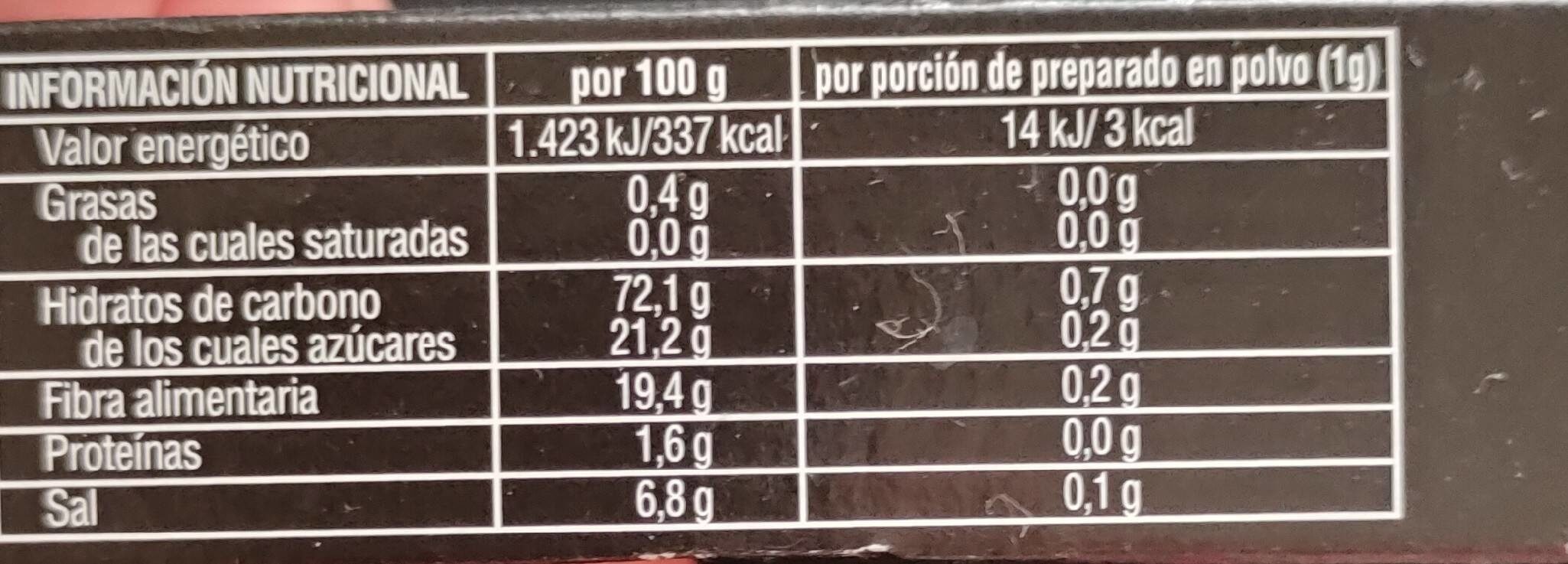Flan Clásico - Hacendado - 30 g
Aquesta pàgina del producte no està completa. Podeu ajudar a completar-la editant-la i afegint-hi més dades a partir de les fotos ja disponibles, o fent-ne més amb l'aplicació de androide o iPhone / iPad. Gràcies!
×
Codi de barres: 8480000320032 (EAN / EAN-13)
Nom comú: Preparado para hacer flan
Quantitat: 30 g
Empaquetament: 22 PAP, en:container
Marques: Hacendado
Categories: Productes làctics, Postres, Postres làctics, Flans
Etiquetes, certificacions, premis: Baix o sense greix, Baix en greixos, Lliure de gluten
Llocs de fabricació o processament: Novelda, Alicante (provincia), Comunidad Valenciana, España
Codi de traçabilitat: ES 26.02994/A CE, JESÚS NAVARRO S.A.
Botigues: Mercadona
Països on es va vendre: Espanya
Matching with your preferences
Entorn
Empaquetament
Transport
Report a problem
Fonts de dades
Producte afegit per vegadona
Última modificació de la pàgina del producte per lorsitog.
La pàgina del producte, també editada per acuario, javichu, kiliweb, musarana, openfoodfacts-contributors, packbot, tacite-mass-editor, thaialagata, yuka.UTdrZEFmeGJoK1kxbnYwZG9FM2UwUEJ5NExqMERHVHZET0VySVE9PQ, yuka.VolTEsasLfZ-EsHM1bg-3xiWFOjnCuB8CH03og.










